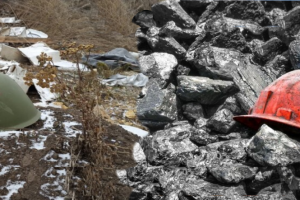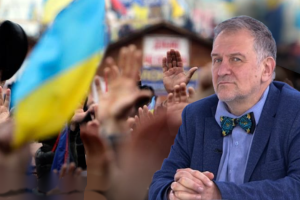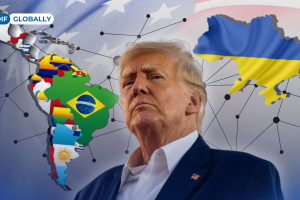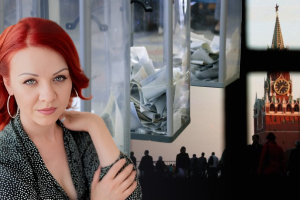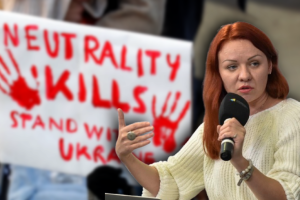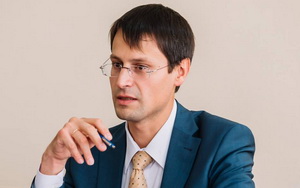
Petro Burkovskyi
is a senior fellow at the Democratic Initiatives Foundation in Kyiv, Ukraine
Ukraine’s new president says he wants to end the Russian-backed war in the country’s east. However, it won’t be easy. There are at least seven dangers of engaging with the occupied territories of the Donbas. The first danger is that a class of highly educated and trained leaders is completely absent. All key positions, whether in the military or within major industrial assets, are possessed and controlled by Russians. This makes any genuine negotiations impossible, since these people represent neither the local population nor themselves: they only transmit orders from the Kremlin.
The second danger is that people who by chance were brought to power during the insurgency against Ukraine and who initially took control of lucrative local businesses have no idea how to maintain successful resource extraction, which is a key feature of any viable emerging state.
Those in charge, like Oleksandr Zakharchenko or Ihor Plotnitskyi or their successors, can only prolong the inefficient, completely illegal, and irresponsible ways of running local economic activities. Moreover, they want to continue such economic performance at all cost, regardless of its negative impact on local communities and the environment. In the case of even moderate external disruption, their model of rent economy would break down, bringing the occupied territories back to the edge of humanitarian catastrophe. It makes them completely dependent on help from Russia and undermines their ability to independently implement steps toward re-engagement with Ukraine.
The third inherent danger is that in the case of engagement with Ukraine, they are going to lose power and will have to step down, since the legitimacy of their rule is founded on war. If the gradual restoration of ties with Ukraine threatens their current position, then they cannot be serious about any kind of meaningful concessions. For them, negotiations remain a zero-sum game, which effectively leads to impasse.
Fourth, it is impossible to define the level of decision-making autonomy they have, but it seems to be very low. The talks during meetings of the so-called Trilateral Contact Group in Minsk proved that representatives of occupied territories are usually supervised and guided by senior Russian diplomats and generals. Thus we can assume that the mandate for negotiations about re-engagement is also controlled and manipulated by Russia for the sake of its own security and interests, which do not reflect the interests of the population of the occupied territories.
Fifth, engagement between an established country and its occupied territory is endangered by vested interests on both sides. In the occupied Donbas, any significant economic activity is controlled by Russian security and intelligence services. Meanwhile, economic ties between Ukraine and the occupied territories have been influenced by corrupt politicians. Corrupt politicians can be voted out of office, but the former problem cannot be solved until regime change occurs in Russia.
Sixth, engagement between Ukraine and its occupied territories must be based on a common understanding of the importance of human rights. In the case of the Donbas, one of the major issues that must be resolved at the beginning of engagement talks is the restoration of property rights for the people who suffered from the conflict or had to leave the occupied territories in 2014-2019. This issue must be addressed on several levels: for common people, for the owners of small and medium enterprises, and for the owners of big objects, including the Ukrainian state. This means that the sides must decide how the burden of restitution is to be shared and who is to pay for what. The difficulty of just this one question makes engagement unlikely.
Seventh, war in the Donbas is mirrored by a clash of narratives on either side of the conflict. Our focus groups and opinion polls conducted in 2018-2019 showed that there is little trust toward conventional media on both sides; there are also high emotional barriers toward a hypothetical reconciliation, and different understandings about what is politically acceptable. As a result, the two sides have contradictory expectations for possible engagement, as well as suspicion that this process will be used by one side to coerce the other. The situation is complicated by the fact that Russia exercises direct and strong control of the narrative in the occupied territories, and continues to undermine any Ukrainian attempts to begin dialogue. In Lenin’s famous words, the Kremlin’s goal is to sustain a situation in which “the worse it is, the better it is for us.”
Under these circumstances, the new Ukrainian president can respond prudently if he develops every practical way of increasing people’s interactions across the line of contact. Moreover, if a permanent ceasefire is established—with or without peacekeeping forces—the subsequent intensification of human flows in and out of the occupied territories will make conflict resolution more probable.
At the same time, this development would be hardly supported by Russia, which always tries to reinforce the status quo. In this case, Zelenskiy can look for unconventional ways to appeal to people living in the occupied territories. He can lift the trade and transportation blockade that makes little sense. He also may call together entrepreneurs from the Donbas who moved to government-controlled areas but have been keeping close ties with their communities, in order to develop a plan of engagement and a peace settlement without Russian interference.
Or he can put forward an economic plan to free the country completely from its dependence on any kind of Russian energy or transit revenues, and accelerate defense reforms in order to apply for NATO membership—long before the Kremlin expects it.
First published in UkraineAlert blog, Atlantic Council
__________________________
This analytical material was presented by the Ilko Kucheriv Democratic Initiatives Foundation as part of its project implemented under the USAID/ENGAGE activity, which is funded by the United States Agency for International Development (USAID) and implemented by Pact. The contents of this analytical material are the sole responsibility of Pact and its implementing partners and do not necessary reflect the views of USAID or the United States Government.




